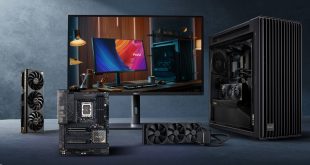Get the Benchmark for yourself over here
First point to make (and its an important one) is that the Kitguru Photoshop Benchmark V1(4) is going to need at least 1GB of ram allocated to Photoshop for the results to be indicative of CPU and system performance – the image file used throughout testing is 10,000 pixels wide and I would recommend 2GB of ram or more to basically eliminate ‘scratch' disk accessing (hard drive ‘virtual memory'). If you are running your stratch disk from an SSD this will not be such an issue, however memory is still considerably faster than any drive mechanism available. My rule of thumb is to open Photoshop fresh with every run to counter any caching algorithms which will slowly over time improve the results – in the real world this is a good thing, but you will find it hard to reproduce figures if you keep the program open and re-run the script repeatedly.

Accessing the performance settings to change the memory accessible by Photoshop is achieved via the PHOTOSHOP menu within CS5. Older versions of Photoshop sometimes have this setting within the EDIT menu. Poke around if you can't find it, its pretty easy to spot. Once you are in this far then scroll down to the performance submenu and select it.

Within this performance panel there is a slider which details memory usage. This shows total ram available to Photoshop and you can adjust the settings to suit your desires. Photoshop normally offers a reasonable ‘best guess' which you can leave alone, however if you are frequently working with large files (like the one on test in our benchmark) then you might want to adjust it to access more of your available memory. 2GB is a sweet spot for Photoshop, however if all you do is work with smallish 72dpi web graphics then you most likely wont need to increase it over the default. For those interested it is worth pointing out that Photoshop doesn't immediately suck all the memory you have requested into the application – it only takes the memory it needs to the maximum draw point you (or the program) selected.
As many of you will know there has been much talk of the graphics acceleration adopted within CS4 and CS5 however for the purpose of our system benchmarking today it makes no difference to the results. The Graphics settings are more based on interface enhancements with the graphics card handling redraw via OpenGL Acceleration. Photoshop CS4 and CS5 leverages the graphics display card's GPU, instead of the computers main processor to speed its screen redraw. For Photoshop to access the GPU, your display card much contain a GPU which supports OpenGL and has enough RAM to support Photoshop functions – at least 128MB of RAM and a display driver that supports OpenGL 2.0 and Shader Model 3.0. For the purposes of our performance benchmark it makes no difference if this is turned on or off, so whichever setting you already have (or prefer) there is really no need to adopt a change.
Once these settings are changed (if they are), then accept and quit the application and reload for the new settings to take hold. With every script run it is worth reinforcing the rule to quit and reload the program to ensure no caching is taking place from prior runs.

The next stage is to download this file, extract it and either directly double click on the actions file or load the actions palette within Photoshop. If you have two versions of Photoshop installed and you double click the actions file, it may very well open and load into an older version of Photoshop if it takes precedence in your operating system. Once the actions palette is opened via the WINDOW menu then the action needs to be loaded.

Once you have the script loaded, then you need to ensure that the actions palette is forced into ‘button mode'.

It is important that you toggle on ‘Button Mode' (indicated by the check tick to the left) otherwise you will not be able to run the script.

Open the image in the folder entitled ‘draconians' – this is an image I rendered years ago for a game company as a pre-production guideline, its 10,000 pixels wide and expands to 228.9MB when opened. This is a very intensive test for even modern day high specification enthusiast systems – older or weaker systems will likely choke on this, so if you are running it on an ATOM powered netbook, then be prepared for a considerable wait to get a final benchmark figure!

Finally, once the script is set up in button mode the last step is to set Photoshop to use “Timing Mode”, this is accessible via a navigation button on the bottom left of an open image. Once this is set, it remains this way until changed again, even on application reloads. You will have noticed by opening the image that the timing already shows a figure, this is basically the time it took to open the image. This counter resets after every action, so there is no need to adjust anything for the benchmark.
 KitGuru KitGuru.net – Tech News | Hardware News | Hardware Reviews | IOS | Mobile | Gaming | Graphics Cards
KitGuru KitGuru.net – Tech News | Hardware News | Hardware Reviews | IOS | Mobile | Gaming | Graphics Cards


